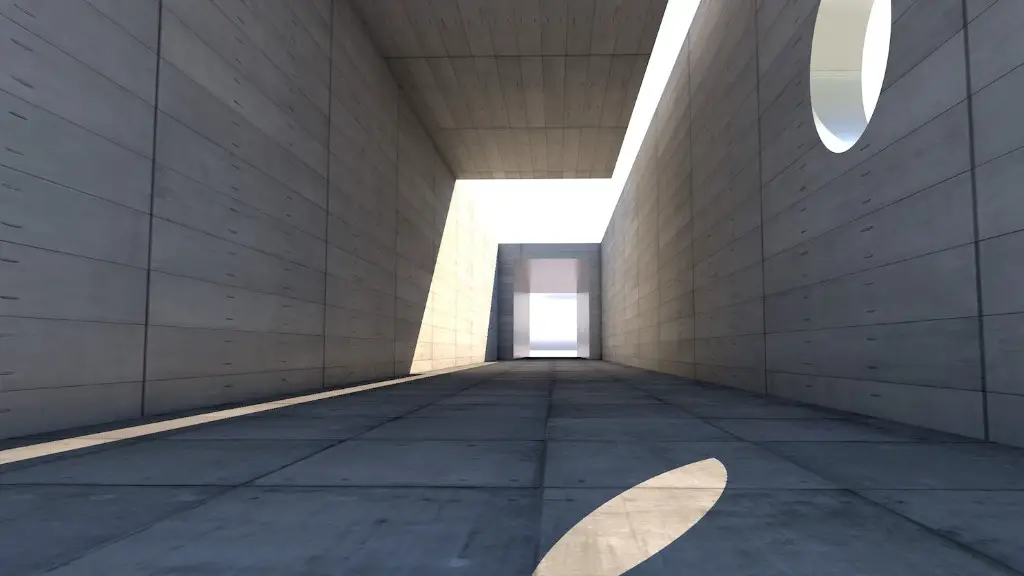Reasons For Studying Architecture
Studying architecture is a challenging yet worthwhile endeavour. It involves knowledge of the past, a critical eye for the present, and preparation for the future. For many, the pursuit of architecture is motivated by a passion for creativity, a love of problem-solving, and an appreciation for the art and beauty of structures around them. In addition, studying architecture provides the means to gain a better understanding of the history and culture of our built environment.
Architecture is uniquely synthesized from many different disciplines, each of which are vital components of its theory and practice. Mathematics, science, art, social sciences, history, philosophy, and technology all make up the essential components of architecture. With this holistic approach, architects have the opportunity to develop knowledge, insights, and skills that make them well-rounded professionals, equipped to tackle challenges in a variety of settings.
A student of architecture also gains a more profound appreciation of our urban landscapes—how people interact with them, where the communities have come from, and what drives their design. By studying the various components of urban planning, architecture students gain deeper insight into the relationship between societies, technology and the environment. Moreover, they develop tools that help them contribute to the betterment of our urban environment.
Furthermore, studying architecture provides countless opportunities for personal and professional growth. Graduates enjoy the advantage of working in one of the most exciting, rapidly changing and highly competitive industries. Through learning to design, research and develop projects, architecture students build a strong foundation for a future career. Moreover, the profession of architecture provides a unique blend of intellectual stimulation, creativity, and practical problem-solving.
Not surprisingly, the demand for architects is typically high, as the industry is continually growing, evolving and changing. From construction of larger and more complex projects to the development of smaller, more efficient and sustainable spaces. Architects are at the forefront of this work, playing a pivotal role in the design and development of more liveable, more efficient and more sustainable places.
Backed by the right qualifications, hard work and experience, there are many possibilities to succeed as an architect. As an architect, one will contribute to the transformation of cities and environments, challenging them to think harder and be better. Exciting, rewarding, and refreshingly creative, the field of architectural design is packed with great potential.
Creativity and Practicality in Design
One of the most appealing aspects of studying architecture is the opportunity to explore design and creativity. Aspiring architects are captivated by the prospect of forging ideas and inspiring projects into tangible built environments, as well as exploring different types of design, materials and concepts to push the boundaries of what is possible. Combined with careful thought, excellent problem-solving capabilities, and strong planning and construction skills, architects can use their creativity to augment their existing knowledge and experience.
For any aspiring architect, understanding the power of design can provide a critical foundation for success. As such, students of architecture should explore the fundamentals of design principles, aiming to incorporate creative and innovative approaches into their work. Whether it’s through experimentation with form, colour, light, sound, graphics, materials or other elements, it’s essential to explore different material and construction technologies, and how these can be used to create contemporary and effective architectural designs.
In addition to the creative side, practicality is also a key factor in the success of any project. Good design necessitates an understanding of building science, engineering, and a thorough exploration of the environment, terrain and site where the structure will be built. According to architecture professor William Fogler, “the key to building successful projects lies in the degree of collaboration between the architect and the builder, as well as in the careful understanding of the “four Rs”—requirements, resources, reality, and responsibility.”
Ultimately, aspiring architects must understand the principles of design and its implementation in order to succeed in the field. Developing the fundamental skills, from traditional drafting to modelling to designing in a computer-aided environment, will equip them with the tools to pursue a successful career in the field.
Interior Design in Architecture
Interior design is an important aspect in architecture, as it shapes informal spaces, as well as enhancing the atmosphere of a room or building. The interior design of a building should match both the nature of its use and the occupants’ needs, creating a space that both aesthetically pleasing and efficient. Architects typically start with a concept or an idea to guide their design, from which they create a detailed plan or blueprint. Utilizing a wide array of materials, colors, lighting and furniture, architects can create unique and distinctive interiors suited to the occupants’ individual needs and preferences.
Architects must take into consideration the technical aspects of interior design, such as electrical wiring, plumbing access and ventilation, to ensure efficient operation of the room. It is also important to consider acoustics—noise levels coming in and out of a room—as well as the temperature and humidity level which can affect indoor air quality.
In addition to formulating the technical aspects of interior design, architects must also handle its visual elements. It is important to be aware of the principles of design, such as balance, contrast, proportion and scale, which are essential for creating visually appealing spaces. Understanding how to effectively apply the elements of design, can result in a space that seamlessly interacts with the building, creating a unique and well-crafted look.
Energy Efficiency in Architecture
In today’s world, architects are expected to create designs using materials and technologies that are energy efficient. From clever insulation and light systems to renewable energy systems, architects have the opportunity to explore innovative ways to reduce the impact of their designs on the natural environment. Incorporating green building standards into new and existing structures, as well as selecting materials that are as low-impact and energy efficient as possible, help to lessen their contribution to global warming.
More experienced architects explore ways to convert a traditional building into a “green” building that generates its own power, uses renewable resources and recycles its own waste. By integrating sustainable practices such as eco-friendly roofing and energy-efficient glazing into their designs, architects can create buildings that reduce carbon emissions and water usage, while also reducing energy costs over the lifetime of the building.
In addition, architects can use cutting-edge techniques and materials, such as insulated wall systems and advanced insulation, to create buildings that incrementally reduce their environmental impact. Such practices help to create more comfortable, efficient and cost-effective living and working spaces, with higher property values and positive impacts on the surrounding natural environment.
Training for Architects
To pursue a career in architecture, it is important to have the right academic qualifications, practical experience and interpersonal skills. The intensive nature of the professional requires a solid educational background that encompasses knowledge in various disciplines, such as mathematics and design theory. According to the American Institute of Architects, “To be credentialed as a professional architect, continual education and training is essential for keeping abreast of the latest technological advances, new building materials, construction methods, and legal codes and regulations.”
Thus, aspiring architects must be prepared to learn and study a wide array of material, as well as practice different techniques and methods of design. In order to stay current in their field, architects must be willing to keep up with the ever-changing trends and policies of architecture, in addition to the standard material taught in any architecture program.
Architects also need to understand the scientific and engineering principles underlying the design process, and develop the analytical and problem-solving skills required to accurately assess the complexities of a project. Moreover, it is important to have well-developed communication and presentation skills, in order to effectively complete a project.
Role of the Architect
Understanding the social and ethical responsibilities of the architect is an essential step towards success in the profession. Aspiring architects need to be well aware of the profound impact their work can have on the environment, on people, and on generations yet to come. As such, they must use scrupulous judgment, sustainability, and adaptability as core principles. To this end, architects must strive to find the delicate balance between innovation and necessity—recognizing the inherent beauty in the natural environment, and employing principles of sustainable design.
Moreover, architects should be cognizant of the dwindling resources available to us, such as water, land, oxygen, and other natural resources. Increasing the efficient and responsible use of these resources is essential for reducing our dependence on them and protecting them for future generations. To this end, architects should strive to use recycled and sustainable materials, ensure their buildings are energy efficient, and aim to create spaces that contribute positively to the environment.
At the end of the day, the role of an architect is as much creative as it is practical. Working collaboratively with clients and other professionals, architects have the ability to envision and bring to life cities, towns, societies and lifestyles of the future.





